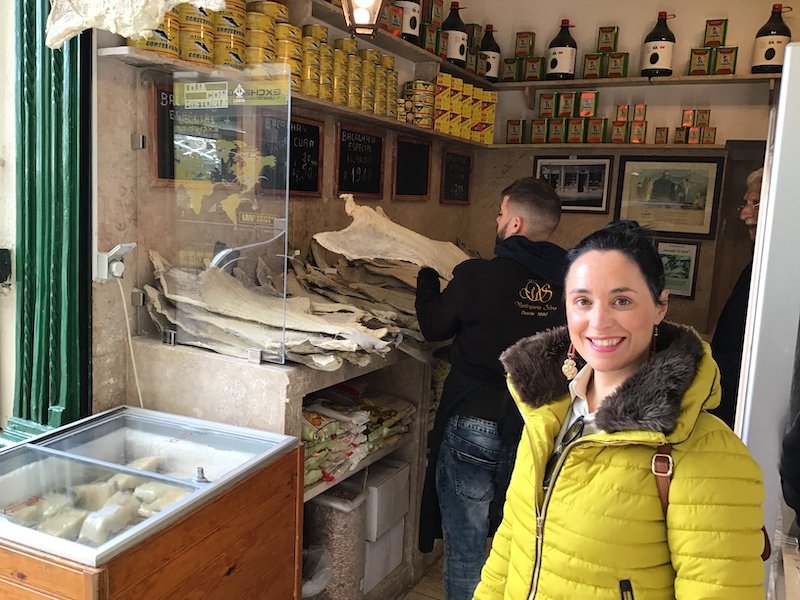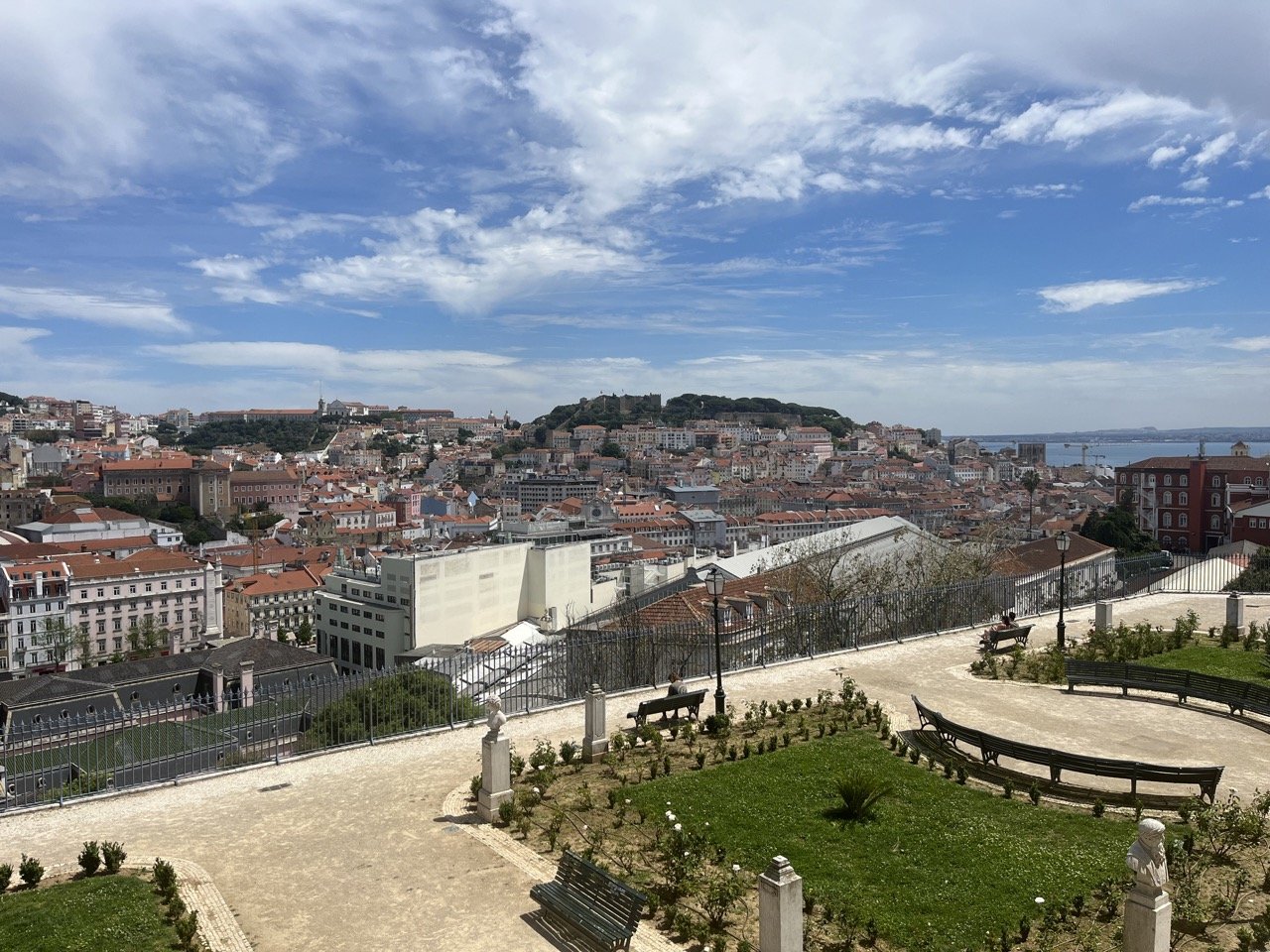A Local’s Guide to Bairro Alto, Lisbon
Please note: some of the links in this article are affiliate links. If you book using one of them, we’ll earn a small commission. All of our info is free to read and free of ads, so we appreciate it!
Bairro Alto is a neighborhood in Lisbon that lives two very different lives depending on the time of day.
Tucked away next to Chiado, it's a quiet, almost sleepy area by day, with some traditional shops, art galleries, and antique bookstores, with the locals going about their daily routines.
But when night falls, everything changes. Bairro Alto transforms into one of Lisbon's liveliest districts. Bars and restaurants spill onto the streets, and Fado houses light up.
On weekends, especially, the narrow streets are packed with locals and tourists, all out for a good time. It's the perfect place to go bar-hopping and easily strike up a conversation with friends or somebody you just met.
To get to Bairro Alto, you can take the metro to Baixa-Chiado station, or, for something more iconic, hop on the Elevador da Glória, a funicular that connects the neighborhood to the Praça dos Restauradores below. Once you're in the neighborhood, it's all about wandering around with lots of time to spare.
More Portugal travel info:
If you could use some help planning your Portugal itinerary, schedule a Portugal travel consultation with one of our Local Experts!
Table of contents
A brief history of the neighborhood
What to see and do
Where to stay
Restaurants to try
Tours of Lisbon with Ana Sofia
If you’re looking to explore Lisbon with a local, reach out to Ana Sofia for a guided tour!
Ana is a Lisbon native and she’s been running walking tours, food tours, and day trips to places like Sintra, Évora, and Óbidos for over a decade.
A fully licensed guide with years of university study under her belt, Ana has the knowledge to keep history buffs happy, but still always makes her tours light, entertaining, and fun.
A brief history of Bairro Alto
The history of Bairro Alto goes back to the 16th century, when it was a residential neighborhood for the working class and later used by the Jesuits and members of the aristocracy. This past is still noticeable in the buildings you can find there today, with simple houses built next to palaces and churches.
Over time, the elite left, and the artists came, choosing the neighborhood to live in and setting up places such as the Conservatory of Arts.
Also, the printing presses and newsrooms of some of the city's leading newspapers chose this neighborhood to establish. Streets in the area still carry their names, like Diário de Notícias and O Século.
The bohemian spirit that came with the journalists and artists, who made the restaurants and bars of Bairro Alto their second home, has never faded away.
But in recent years, local authorities have tried to regulate the effects of tourism and nightlife on the area, implementing restrictions on noise levels and licensing new establishments in an effort to preserve Bairro Alto's identity while ensuring it remains a livable place.
What to see and do here
The view from Miradouro São Pedro de Alcântara viewpoint
Evening is one of the busiest times in Bairro Alto, but some places are worth exploring during the day.
The viewpoints are at the top of the list. The Miradouro de São Pedro de Alcântara is the most famous, and the view over downtown, from the castle hill, through the historic neighborhoods to the river is extraordinary.
A few meters away is the Igreja de São Roque, home to the Museu de São Roque, one of the first art museums to be created in Portugal. If you're interested in sacred art, don't miss the museum at the Convento dos Cardaes on Rua do Século. This was one of the few places that withstood the earthquake.
The Miradouro de Santa Catarina, with a more relaxed atmosphere, is another classic in this neighborhood. Also known as the Adamastor viewpoint (named after the mythological character created by the Portuguese poet Luís de Camões), visit this spot at the end of the day when it's livelier, filled with young people and street artists.
When you visit this viewpoint, stop off at the Museu da Farmácia next door to learn about the history of Portuguese Pharmacy from the 15th century to the present day. It also houses an authentic 19th-century traditional Chinese pharmacy from Macau.
Finally, ride in a typical Lisbon elevator in this neighborhood. There are two to choose from. The century-old Elevador da Bica connects Largo do Calhariz to Rua de São Paulo, and the Elevador da Glória runs from Praça dos Restauradores to the Miradouro de São Pedro de Alcântara.
This elevator is so iconic that it was the name of a famous song by Rádio Macau, one of Lisbon's most avant-garde bands in the 1980s.
The tram in Bairro Alto
Where to stay
Bairro Alto Hotel - Facing Praça Luís de Camões, this hotel sits between Chiado and Bairro Alto. It offers spacious rooms inspired by Lisbon's colorful surroundings ($350-500).
The Lumiares Hotel & Spa - Suites and apartments come with equipped kitchens at this five-star hotel, complete with a rooftop bar, restaurant and a spa ($300-500).
Selina Secret Garden & Coworking - An ideal spot for young travellers working remotely, Selina offers a co-working space and multiple events like yoga and DJ sets ($100).
LX Boutique Hotel — Next to Bairro Alto but far enough away to have some peace and quiet at night, this accommodation results from the renovation of a century-old hotel that now offers cozy rooms, some with a privileged view over the river. (from $140)
Solar dos Poetas — Located in Bairro Alto's most famous square, this classic architecture hotel offers cozy rooms with vintage touches. (from 150€)
Bairro House Lisbon Charming Suites — These modern rooms are a 7-minute walk from the Miradouro de São Pedro de Alcântara. They all have a balcony and soundproof windows, which can be helpful since you're right in the center of Bairro Alto. Because it's an old building, there's no elevator, so be prepared to climb some stairs. (from $120)
The Lumiares — Created in collaboration with local artists and Portuguese brands, this hotel offers elegant rooms, apartments, and two-floor accommodations, as well as a spa and gym. (from $350)
Palácio Ludovice Wine Experience Hotel — Classic meets contemporary in this 18th-century palace that was once the home of João Federico Ludovice, architect to King João V. It has luxurious rooms with original ceilings and tiles, a spa and a good restaurant as well as a nice bar with a great wine selection and craft cocktails. (from $240)
Restaurants to try
A Nossa Casa — Open for dinner only, this casual spot offers a mix of local and international dishes.
Essencial — An upscale restaurant serving modern dishes inspired by French cuisine.
Las Dos Manos — Mexico meets Japan at this trendy restaurant run by Chef Kiko Martins.
Casanostra — One of the oldest restaurants in Bairro Alto, Casanostra specialises in homemade Italian dishes, from pasta to seafood.
100 Maneiras — A Michelin-star restaurant serving tasting menus inspired by the chef’s Bosnian roots with a few Portuguese touches.
Tantura — Delicious Mediterranean dishes like hummus and falafel are the focus of this cosy spot in the heart of Bairro Alto.



Private guided tours with Ana











